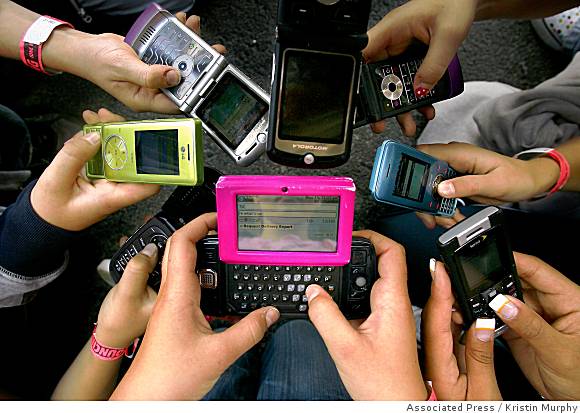
Kids are doing it in Cincinnati and Tacoma. They're doing it in Louisville, Ocean Springs, Dallas, West Fargo, Atlanta, Brentwood and New Smyrna Beach. It's time we worked together for New York City youth to do it too.
I'm talking about students in public schools with programs called Bring Your Own Technology, or BYOT, which support and encourage the use of personal devices like smartphones, tablets or e-readers in classrooms.
Rather than confiscating phones upon entry to the building, teachers in BYOT schools are integrating mobile apps and tools into their lessons. Students use Google Drive to collaborate on projects, answer pop quizzes, participate in class discussions, snap photos of assignments and classroom presentations and much more. Meanwhile, teachers are using their own tools to help them create data visualizations showing whether students have grasped a concept, to track class participation and to communicate with students learning English as a second language.
But, in New York City public schools, mobile devices have been banned since the 2005-2006 school year.
According to a 2013 study by the Pew Research Center and the Berkman Center for Internet & Society, 37% of all teens have smartphones, compared to 45% of all adults. Moreover, teens living in households with annual incomes under $30,000 are only 4% less likely than their wealthier peers to own a smartphone. Given these findings, it makes sense for schools with tight budgets to have students use the technology they already own, rather than invest in computers and other digital labs.
Of course, there are hurdles we will need to work to overcome: so many online devices can stress school data networks, forcing many teachers to allow students to access the Internet using their own data provider network, which allows them to get around firewalls blocking social media and inappropriate websites. Not every student in a class uses the same device, and it's important for teachers to receive training before implementing a BYOT program.
With The LAMP, media literacy program facilitators travel to schools and communities throughout New York City, typically transporting laptops, cameras, microphones and other equipment, enabling us to bring 21st-century learning opportunities to young people and adults who otherwise use technology primarily for entertainment. We've worked in schools of five hundred students, all sharing one laptop cart and one media librarian. We've been in school technology labs stocked with computers that rarely get used, often because they're horribly out-of-date or because few people have any training on how to use them to support teaching. Meanwhile, most of the students have their own technology, which they already know how to operate, and which are typically not more than a couple of years old.
Educators and administrators nationwide are acting on what they see as the inevitability of BYOT in schools. As Lenny Schad, chief technology information officer at the Houston Independent School District, told the New York Times in March, 2013 after implementing a BYOT program in Katy, Texas, "My message: It shouldn't be 'if' we do it, it should be 'when' we do it...On a smartphone, there are no limitations. This is the world they live in and we're bringing it into the classroom."
When we confiscate students' smartphones, we are sending them a firm message that technology devices are toys. So it can be no surprise that young people treat them as such, particularly if they're not fortunate enough to be in schools that issue laptops and tablets to each student, or where each student spends school time every day on a computer connected to the Internet. If we're not showing them the endless possibilities of how they can learn and explore with technology, they're being left behind as millions of other young people come to understand that technological devices are actually tools to connect them with an endless array of resources to support learning, civic engagement and creativity, often available at little or no cost.
Successful BYOT programs are not implemented overnight, but as so many wise teachers told me when I was young, anything easy probably isn't worth doing. Models for BYOT programs are out there and working in school environments that are suburban and urban, advantaged and disadvantaged. It's time for all of us – program providers, students, educators, parents, the Mayor's office and the DOE - to work together to relinquish the ban on smartphones in classrooms, and at minimum launch BYOT pilot programs in our public schools to help New York City students gain the skills they need to get jobs in the multi-billion dollar tech and media industries our city is working so hard to build up.
***
Emily Long is the Director of Communications and Development at The LAMP. Find her on Twitter using @emlong, or follow The LAMP at @thelampnyc.
***
Gotham Gazette's executive editor, Ben Max, is a member of The LAMP's young executive board. Opinions of neither Ben nor Gotham Gazette are represented in this article.